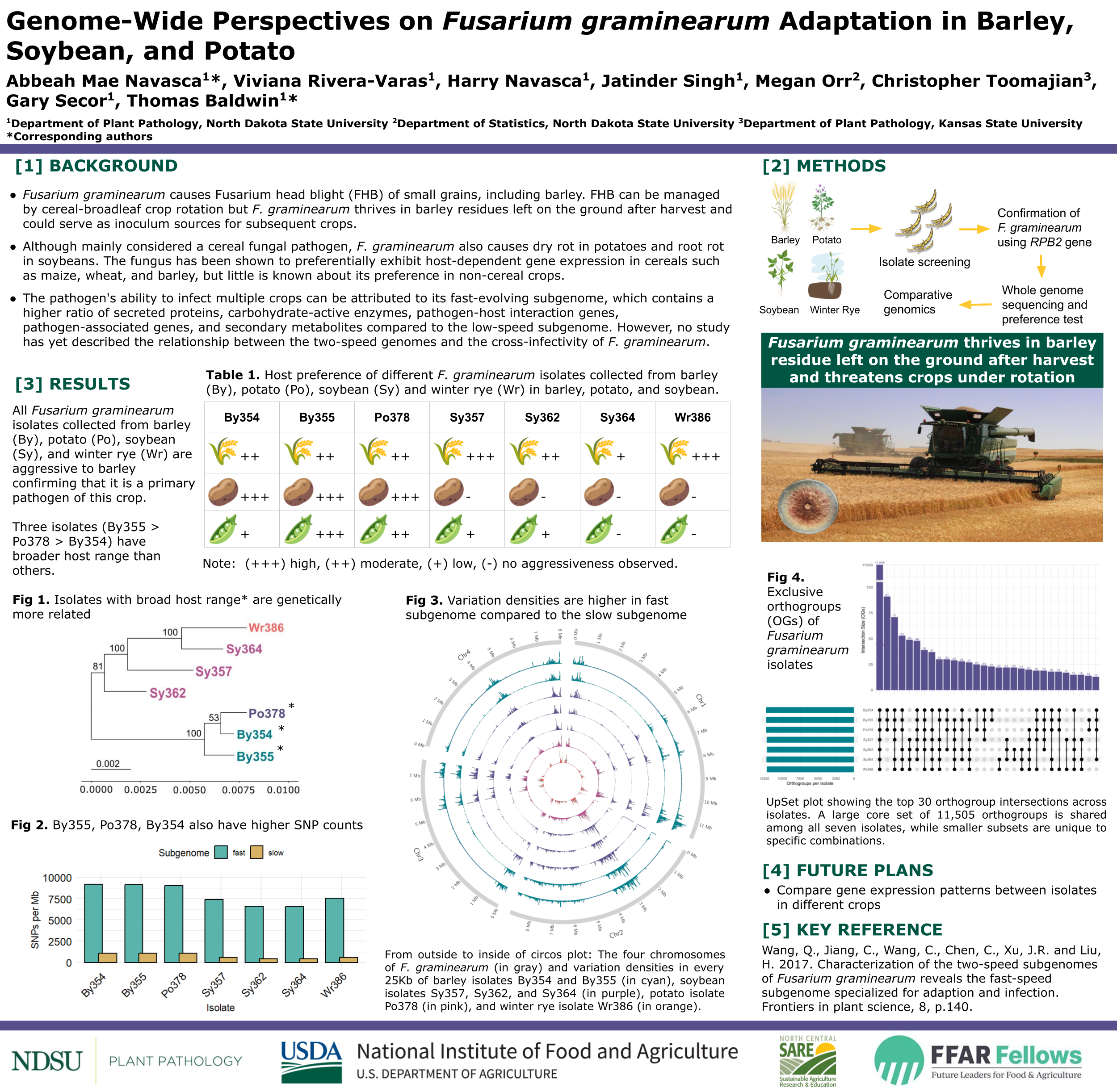Authors: Abbeah Mae R. Navasca 1, Viviana Rivera-Varas 1, Harry P. Navasca 1, Jatinder Singh 1, Megan Orr 2, Christopher Toomajian 3, Gary Secor 1, Thomas Baldwin 1
1. Department of Plant Pathology, North Dakota State University
2. Department of Statistics, North Dakota State University
3. Department of Plant Pathology, Kansas State University
Corresponding Authors: Abbeah Mae R. Navasca, abbeah.navasca@ndsu.edu and Thomas T. Baldwin, thomas.t.baldwin@ndsu.edu
Presenting Author: Abbeah Mae Navasca
Abstract
Fusarium graminearum causes Fusarium head blight, damaging small-grain crops including barley, and
produces the mycotoxin deoxynivalenol (DON), which poses health risks to humans
and animals. Crop rotation is a sustainable management strategy often used in
North Dakota to control various pests and pathogens. However, crop residues can
harbor pathogens such as F. graminearum, serving as inoculum sources for
subsequent crops. Although F. graminearum is mainly a fungal pathogen of
cereals, it has also been reported to cause dry rot in potatoes and root rot in
soybeans. The pathogen adapts to different crops, which makes crop rotation
alone insufficient for managing the disease. We hypothesize that, in addition
to its preference for cereals, F. graminearum might also favor
non-cereal crops in a rotation system. To examine this, we cross-infected a
total of seven F. graminearum isolates collected from barley (2), potato
(1), soybean (3), and winter rye (1) onto barley, potato, and soybean. Results
of our cross-infectivity experiments show that F. graminearum isolates
vary in aggressiveness levels. For instance, isolates from potato and barley
caused similar levels of disease when inoculated into potato tubers, whereas
soybean and winter rye isolates caused no to low disease in potato. We
sequenced isolates and examined how genomic features affect host preferences.
Each genome had 4–5 contigs totaling 36.5-37.5 Mb, consistent with F.
graminearum size. The largest contigs reached 11.8 Mb, with an N50 over 9
Mb, indicating high contiguity. GC content was stable at 47.8%, with no
ambiguous bases. Genomic analysis showed that F. graminearum isolates
from barley and potato had higher variant counts and rates than those from
soybean and winter rye. In addition, barley and potato had the most SNPs,
insertions, and deletions, while soybean and winter rye had fewer variants.
Variant rates were also higher in barley and potato (1 per 233–236 bp) than in
other isolates (1 per 337–390 bp). All seven isolates share a large core genome
of 11,505 orthogroups, indicating conserved functions, but comparing accessory
genes reveals two groups: barley and potato, and soybean and winter rye. Our
findings indicate that while F. graminearum has conserved regions
(core), a small part of its genome (accessory) is variable and may influence
the fungal pathogen’s ability to infect specific crops. Our study is the first
to demonstrate the connection between cross-infectivity patterns and genomic
variation in Fusarium graminearum.

